Today we will be discussing the Hoya Bilobata plant and how to care for it. If you are a hoya owner, you may already know some of how to care for one, but this post will give you a few specifics for your Hoya Bilobata plant and its care.
Table of Contents
Hoya Bilobata Background and History
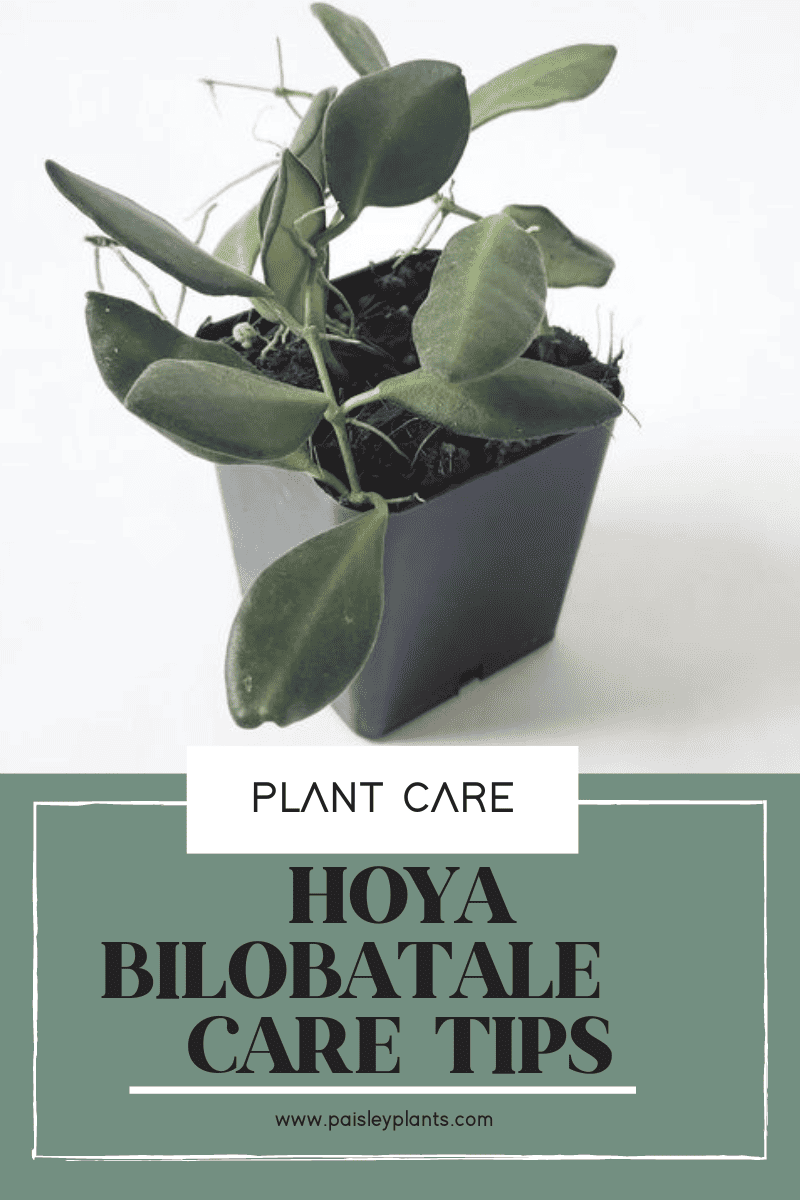
The Hoya Bilobata was originally discovered on the Philippine island of Mindanao. It was then sent to Dr. Rudolph Schlechter, a German economic botanist, who first described it in 1906. It is one of the many small leaves and flowering Hoyas belonging to his collection.
It’s often mislabeled at big box stores as a hoya tsangii. You need to see the flowers in order to know which is which – the Bilobata has smaller flowers!
Other common names for the Hoya Bilobata are the Wax Plant and also the porcelain flower. It is also sometimes called the Wax Flower.
Toxicity
Even though there is sap in the leaves, stem and roots of a Hoya Bilobata, it is not known to be toxic. It is possible for someone to be allergic to it, but it is not listed on any lists of poisonous or toxic plants for humans or animals.
Hoya Bilobata Care Tips
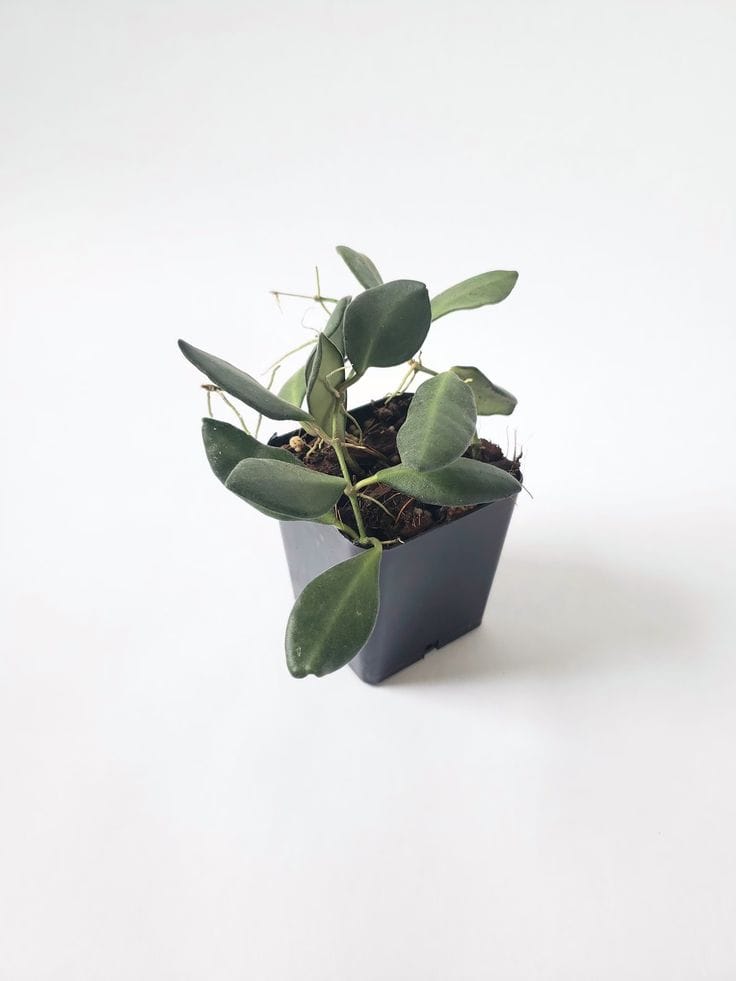
Images via Voeller Tropicals on Etsy
Water Requirements
One thing you want to be sure of with your Hoya Bilobata is that you don’t overwater it! They are tolerant of dry conditions, but will definitely show it if you overwater them! You should always check the soil moisture before you give your plant any additional water.
Most Hoyas don’t need water more often than every 14 days. Their leaves hold moisture, so you will want to be sure to check that the soil is completely dried out before watering your plant again. Water thoroughly and let the water run out of the bottom of the pot until it drains completely,
Light Requirements
Keep your Hoya Bilobata in a place that receives either medium to bright, indirect sunlight. Remember that these plants are not suited for low light or direct sunlight, so will do best away from a brightly lit window.
They do love the light from the morning sunshine, but the heat from the bright, harsh afternoon sun may scorch their delicate leaves. It can also make the leaves turn yellow.
Soil Requirements
Hoya Bilobata will do best in well draining soil. You can make a good mix of regular potting soil and add some organic matter to it such as perlite, coco coir or vermiculite. This will help keep the soil loose enough to allow proper drainage.
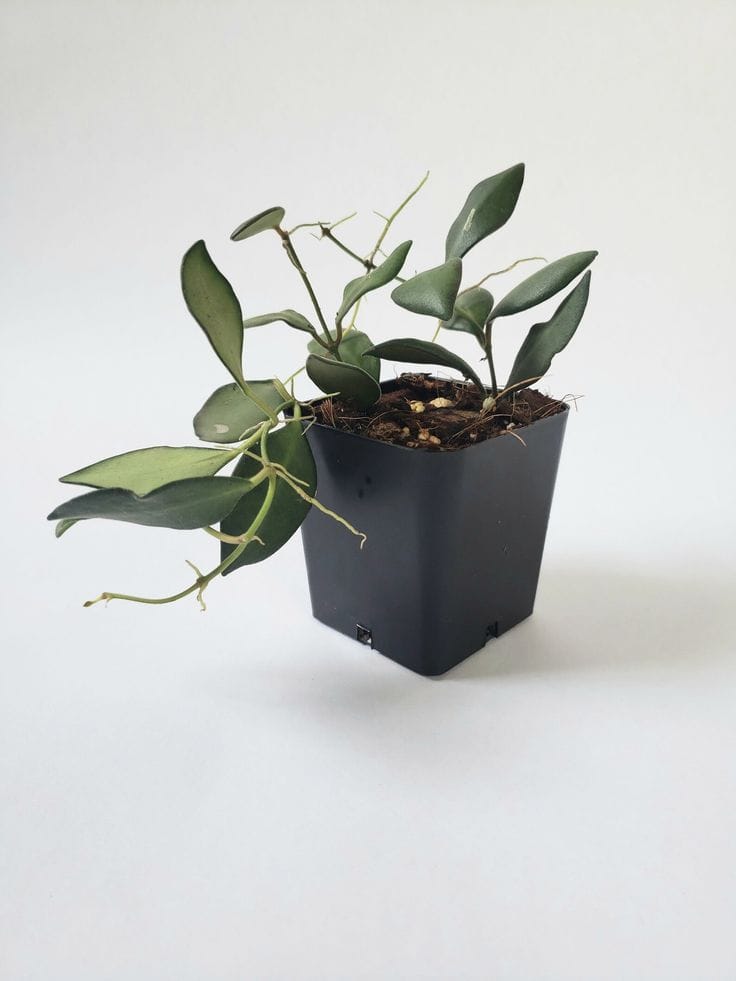
Images via Voeller Tropicals on Etsy
Fertilizer Requirements
The International Hoya Association suggests feeding your Hoya Bilobata once monthly. This would be with a diluted liquid fertilizer that contains nitrogen, phosphorus and potassium.
You should also remember that plants typically get their energy from sunlight, not fertilizer. Fresh potting soil has all the nutrients your plant needs, so as long as it’s refreshed yearly, you shouldn’t need fertilizer.
Temperature and Humidity Requirements
The best range of temperature for your Hoya Bilobata is between 60 and 95 degrees F. If you grow it outdoors, it can be grown in a bright shaded area, but if grown indoors it does best in bright indirect light.
Be careful to keep your Hoya in warm enough temps that don’t go below 50 degrees F or colder for any extended period of time. These plants are tropical and will not be able to tolerate these cold temperatures.
As far as humidity levels go, a minimum humidity level of 60% is recommended. They can tolerate a humidity level of as high as 80% however, since they are tropical plants. The higher the humidity level, the better your plant will grow.
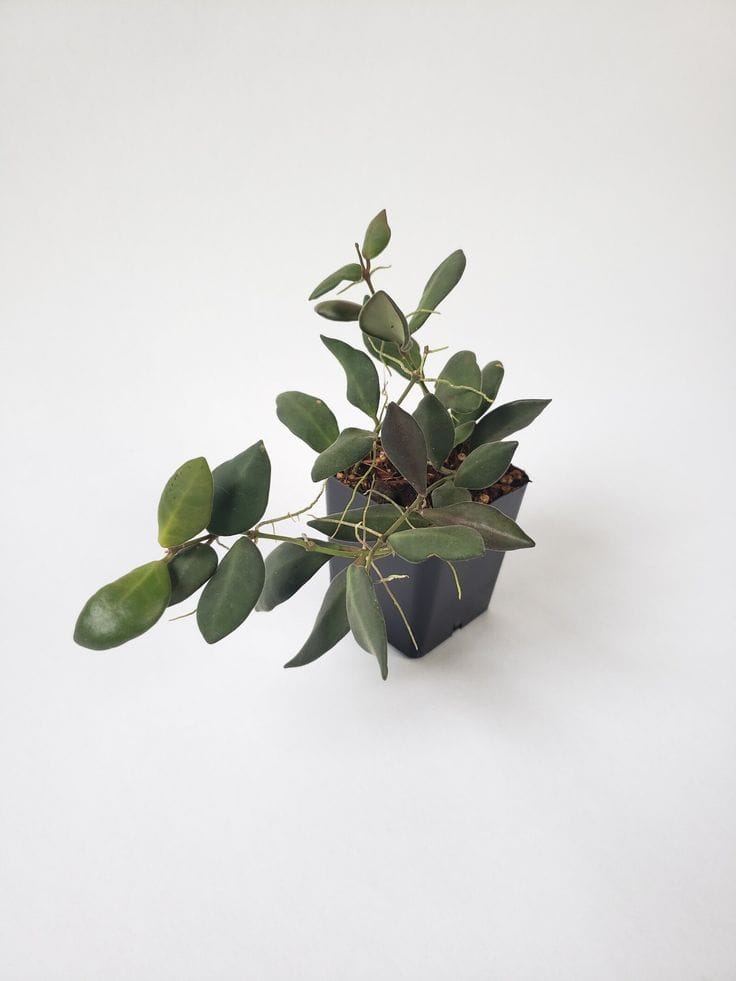
Images via Voeller Tropicals on Etsy
Pests and Diseases
Sap sucking pests like aphids, scale insects, and mealybugs are common pests for hoyas. They will attach themselves to the leaves of the plants and, if left untreated, will harm your plants. The first thing you should do is isolate your plant from any other plants you have to protect them from infestation.
Manual controls such as spraying the plants with a strong jet of water (concentrating on the underside of the leaves) can help kill off both mealybugs and aphids. You can wipe scale insects off the plant with a damp towel or cotton paid. You can also use insecticidal soaps if you find the infestation is worse than you thought.
Another type of infestation can be fungus gnats. They thrive in soil of overwatered plants and feed on any algae present in the soil. They can spread to other plants. Prevention is key to keeping them at bay. Allow your plants to dry out between waterings and this will go a long way to preventing an outbreak of fungus gnats.
Two types of diseases that affect Hoyas are gray mold and root rot. These occur when your plant is weakened by overwatering. The gray mold is easy to spot by the white, gray or even dark brown mold that develops on the stems and leaves of the plant.
The only treatment for root rot is to remove the plant from its container, remove the diseased (usually mushy) roots, and repot it in a new container with fresh soil. Be sure your new container has sufficient drainage to avoid overwatering and only water once the soil is completely dried out.
Pruning and Repotting
If your hoya becomes too bushy or the stems look overgrown, you may want to prune them back. You can do this by cutting a stem close to a node. This is a bump where the leaves grow from.
You should also cut back any dying or yellowing leaves to keep the plant healthy. Allowing the green portion of your plant to get all the nutrients will keep it healthy and happy.
You will want to repot your Hoya Bilobata either once a year or when it doubles in size, whichever comes first. When you do repot it, you will want to be sure to use a pot that is at least one to two inches larger than the current pot.
Use fresh soil which will have the nutrients needed for your plant to thrive. Be sure it is well draining and not heavy soil which can retain too much water. This will not allow the roots to receive the much needed oxygen to grow properly.
Common Problems
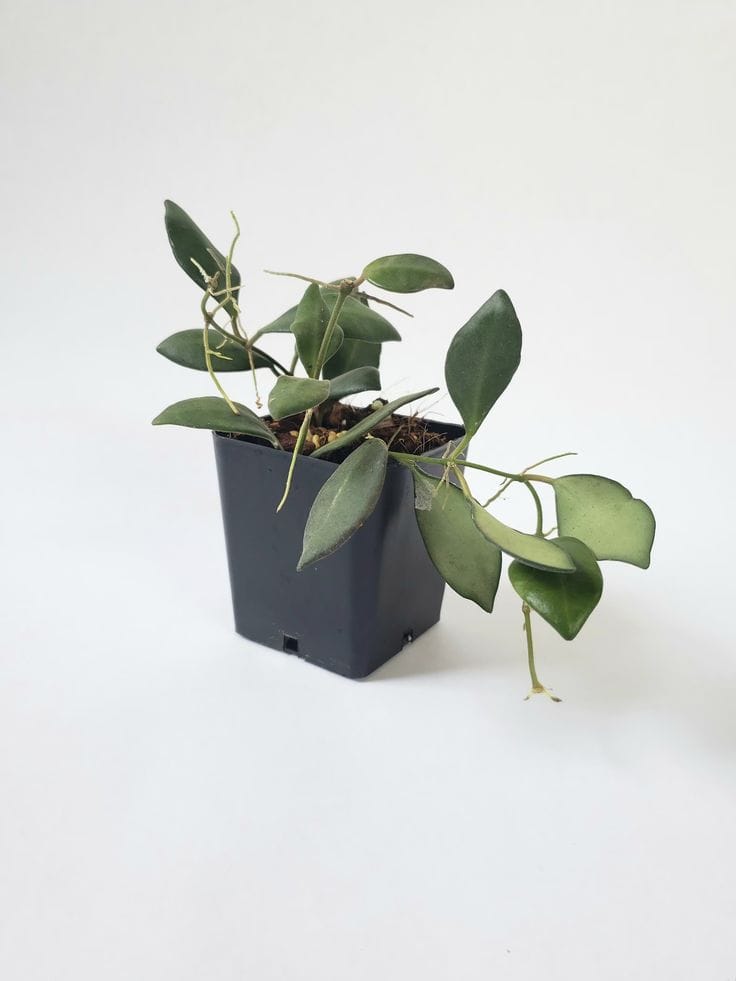
Long and Leggy Spaces Between My Hoya’s Leaves
This can happen when your plant is not close enough to a light source. The stems will stretch searching for more light. Moving your plant closer to a good light source can help solve this problem. They may also be searching for something to climb on, so adding a trellis may also help solve this problem.
Leaves on My Hoya Limp Even after Watering
This can be a sign of either overwatering, underwatering or root problems. The first thing you need to do is check the root system to see if they are healthy. If not, you may need to cut the dead roots off and repot the plant into a new pot with fresh soil.
Also, keeping a regular watering schedule and allowing the plant to dry out completely between waterings should help solve this problem. Hoyas do not like wet feet or standing in soggy soil!
My Hoyas Leaves Are Falling Off
The most common reason for this is temperature related. Be sure to check the placement of your hoya to determine if it is sitting in too cool of a place or in the path of a cold draft. If so, move the plant to a warmer location and this should help solve the problem.
FAQs
This is due to overexposure to light and a sign that the leaves have been burned. You need to place the plant in a different place where the plant will receive bright indirect sunlight.
Typically, your Hoya Bilobata won’t bloom when grown indoors. It needs a lot of light and the right growing conditions for it to bloom. Some will, however, bloom after they are old enough. Sometimes it takes five to seven years. It just depends on all the right conditions!
It can be a climber, but you will need to provide either a moss pole or a trellis for it to climb on. You should start its growth habit when the plant is young to train it to be a climber.
In Conclusion
The Hoya Bilobata, or Wax Plant as they are also called, almost appear to be fake at times. Their glossy, green, waxy like leaves give a stunning appearance in any setting. Add one to your own collection to see how much it improves the look of your own environment! As always, keep on growing!
